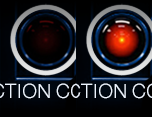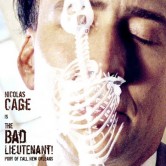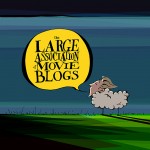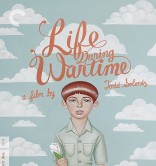Movie Posters: LIFE DURING WARTIME (2010) and Other Films by Todd Solondz
STORYTELLING (2002)
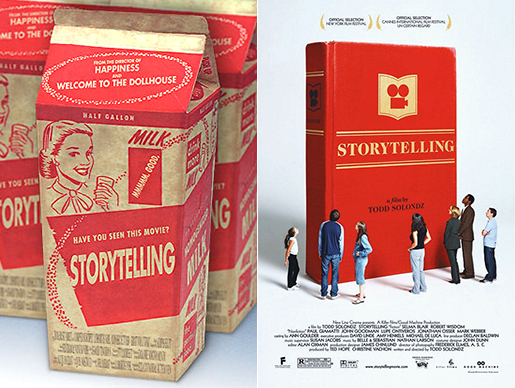
Storytelling (2001)
Designer: Unnamed
Storytelling (2001)
Designer: Unknown
![]()
The finalized poster of Storytelling (2001) is a conceptually-rich one. Here the character are paying reverence before a large monolith-like book that encompasses all that is storytelling in filmmaking. Mostly it is Todd Solondz’s means for telling a story. Storytelling is Solondz’s rebuke for those who thought his purposes for making Happiness were “glib and facile” for “showing how superior (he was) to his characters.” Todd Solondz cares too much about his genuinely flawed characters to put them through a condescending exercise. His characters have problems and he’s going to be upfront about them, even if they are politically incorrect. The mainstream doesn’t want to deal with them, but Solondz is. These characters are really hurting inside and they deserve a compelling story about them.
Read and listen carefully to the lyrics of the Belle and Sebastian song that plays over the end credits.
STORYTELLING Song
by Belle and Sebastian
STORYTELLING Main Title
Music by Nathan Larson
![]()
“Storytelling” Lyrics
Picture a scene in your mind
Look at all the people and take note of the setting behind
Listen, watch, and wait
A plot beings to take shape
There’s a story
And then characters will come to you
Relating events as they choose to
But all their words and actions come entirely from you
If you’re a storyteller you might think you’re without responsibility
And you can lead your characters anywhere you want
You have immunity
Have you considered the way
People might react to all the things that your characters say?
And are their actions hand in hand with what you want to portray?
Are you sick?
Are you crippled? Insane?
Expressing the desires that daren’t speak their name?
Are you the one to be blamed?
Now you’re a storyteller you might think you’re without responsibility
But in directions, actions and words
Cause and effect
You need consistency
How can you finish the tale?
Lives which have played a part
Are summarized from the very start
And episodes left out to make it all go your way
“It’s a mighty big world
Some of it I’ve seen
But mostly I’ve only heard
And stories are all fiction from their moment of birth”
You’re just a storyteller
You’re not trying to escape responsibility
If we believe you then you’re successful
But you don’t make claims of verity
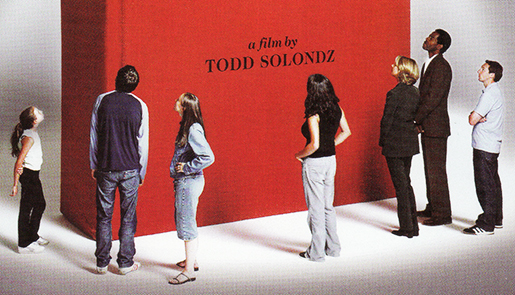
Who is in this picture? A child. Teenagers. Young adults. Professional adults. None of them appear in the movie except for (maybe!) the adult male on the right. Is that the Creative Writing teacher Mr. Scott played by Robert Wisdom? I have spent years wondering this. Is it a double? That would make sense considering that the poster was created once all of the lead actors went their separate ways after the shoot. What’s unique about this movie poster is how it really is about its conceptual idea and not about the actors in the movie. These faceless subjects are not the cast members because that would distract from the poster’s meaning.
I have also superimposed the Catherine character (“It’s just my opinion and what do I know?”) played by Aleksa Palladino as the brunette in the center, however, I know that is a double.
STORYTELLING (2001) Japanese Poster
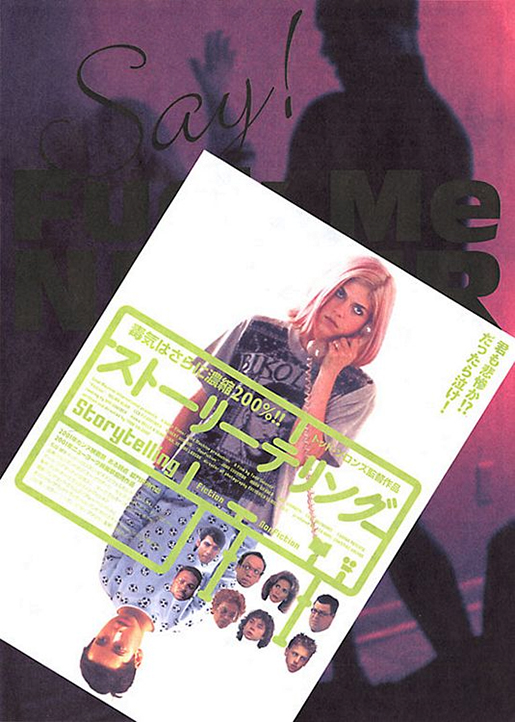
This poster is kind of ingenious by demonstrating how Solondz dealt with the MPAA’s demands to cut a crucial scene from the film. The scene is a heavily-shadowed sex scene that shows enough to be viscerally clear without being bodily graphic. It works for a mature audience, but the MPAA is having none of that. Such a scene cannot be shown in American theaters because their system doesn’t care to make a workable rating that says “No Children Should See This Adult-Oriented Comedy/Drama”.

Storytelling (2001)
Storytelling (2001)
![]()
Todd Solondz counterattacked by covering up the sex scene with a red box. Some discussion was made over Solondz’s tactic to demonstrate how the MPAA exercises censorship. The most memorable exchanges were made by Ebert who sided with Solondz and Roeper who thought it was distracting.
I, however, saw Storytelling in its desired form without the red box because it was shown in a a Canadian movie theater. We have very sensible people in charge of our classified movie rating system. Storytelling got an 18A (Adults Only), however, I did see Storytelling in theaters when I was seventeen. I was psyched about it then and it was one of my most treasured experiences from that year.
Full disclosure: I also saw Catherine Brelliet’s Fat Girl that same year. I will never forget the sight of over a dozen people jumping out of their seats and running for the exits when the very violent climax occurred. When I was sixteen, I saw and loved Mary Harron’s American Psycho (2000) complete with Patrick Bateman going all Narcissus in front of mirror while having sex with a couple of call girls.
I was a very mature teenager back then and look how well I turned out!
What Ebert & Roeper Said About It
This is one of my personal favourite reviews by these two. That opening alone is so well written. I especially like how Ebert loses it over the MPAA: “I think (Todd Solondz) should have his cake!” Right there Ebert confirmed one of my long-standing beliefs: Cake really does taste much better when you have it and eat it too!
FYI: I can never forget that the movie they reviewed before Storytelling was Rintaro’s Metropolis (2002). I love the way Ebert charges in just as Roeper is two words away from wrapping up his own review: “I LOVE this movie! I love it! It’s probably going to be on my list of the Best Films of the Year!” I didn’t even have watch the video — I just wrote that from memory. His enthusiasm is so infectious!
Ebert & Roeper on METROPOLIS (2002)
I really admire the way Ebert organized his Best Films of 2002 List. He ties 58 films “for 11th place” including Metropolis, Punch-Drunk Love, Last Orders, Tully, Changing Lanes (which he also predicted would have gone on his Top Ten when he reviewed it in February that year… and on the same week as Bill Paxton’s terrific Frailty), Personal Velocity, Me Without You, 25th Hour (that one by Spike Lee made his Top Ten of the Decade!), The Good Girl, Pumpkin, Read My Lips, and yes, Storytelling.
For me, 2002 was such a great year for the movies that last decade. That and 2007!
STORYTELLING (2001) Rare Trailer
STORYTELLING (2001) Trailer
This trailer was a crucial part of me being 17.
STORYTELLING (2001) Main Title Sequence
WELCOME TO THE DOLLHOUSE (1996)
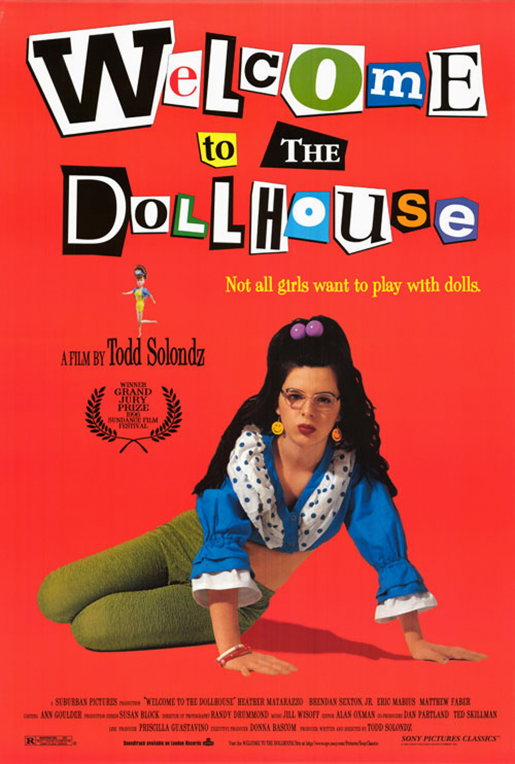
This is officially Todd Solondz’s first film Welcome to the Dollhouse (1996). My older sister and I saw this one on video (as well as Matthew Bright’s Freeway, 1996) when it was released in the Fall of 1996 and we both related to the indignities put upon Dawn Wiener (“Wiener Dog!”). Heather Matarazzo plays the gawky teen who fights against the constant victimization by her classmates, teachers, and even her own family. Despite the relentless abuse she gets from the name-calling, spitballs, group attacks, and enforced isolation, Dawn doesn’t play innocent. She lashes out and is vindictive to others below her on the food chain. Hey, it’s all she’s getting! Solondz sympathizes with Dawn, but he isn’t going to treat her with kid’s gloves.
Dawn Wiener reads from her paper on “Dignity”:
God, I remember having to write one of these along with the rest of the class. It’s when the teacher is too lazy to punish the obvious offender so she goes after everyone. I remember my Fourth Grade teacher got revenge on an obnoxious student by holding the whole class from Recess instead her alone. Everyone found their scapegoat. The teacher actually gave the poor girl a head start before she released the bull-minded classmates after her outside. Eat your heart out, Sgt. Hartman (R. Lee Ermey): “They’re paying for it! You eat it!”
Looking at the poster, what really pops out are colours so vibrant that they attack the eyes. The deranged title design is lock-step with the snippets from a magazine, which are usually seen on ransom letters cut-and-pasted by the kidnappers. Dawn isn’t posing on the ground so much as she is cramped by the surrounding text. Like Everett and his chain-gang posse of escapees, Dawn is in a tight spot. Just look at what she’s wearing! I remember Gene Siskel pointing out that Dawn’s situation could be much better had the parents taken an interest in her wardrobe. It’s harder to make fun of someone who looks stylish!
Dawn Wiener looks for a seat in the cafeteria:
Heather Matarazzo on
“Conan O’Brien”
Conan O’Brien on
STORYTELLING (2001)
![]()
Leonard Maltin praised Welcome to the Dollhouse for its “terrific satire (and guffaws) as life in the Seventh-Grade-From-Hell is depicted with dead-on clarity.”
Ebert ended his four-star review like this: “If you can see this movie without making a mental hit list of the kids who made your 11th year a torment, then you are kinder, or luckier, than me.”
WELCOME TO THE DOLLHOUSE (1996) Trailer
Steve (Daniel Rey) and the Quadratics sing “Welcome to the Dollhouse”
The Quadratics! Only nerds like Mark Wiener would think that would make a great band name.
The Kickass Version of the Song “Welcome to the Dollhouse”
Awesome.
UPDATE: August 27th, 2010
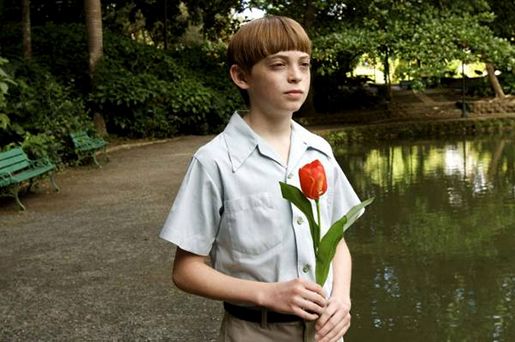
“Gumdrops?”
Page: 1 2
© 2008 – 2024, CINELATION | Movie Reviews by Chris Beaubien. All rights reserved.


